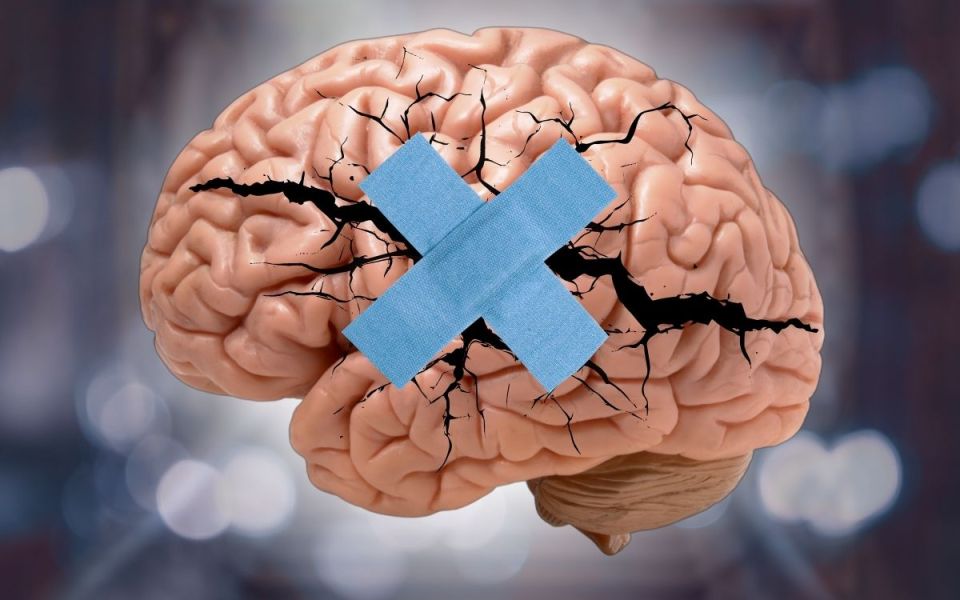The Brain's Worst Hit: Understanding Traumatic Brain Injury

In the movie Home Alone, Kevin McCallister rigs his house with swinging paint cans and icy stairs, sending burglars flying headfirst into walls and floors. Funny? Yes, if you're watching from the couch. In reality, those collisions and impacts could result in Traumatic Brain Injury (TBI), a condition much more severe than comedies suggest.
The brain is a delicate organ, similar to tofu in a sealed jar. It is suspended in cerebrospinal fluid and protected by a rigid skull. However, when you experience a blow to the head, your brain can collide with the inner surface of the skull, causing damage to brain cells, stretching blood vessels, and triggering a wave of inflammation. Unlike a sprained ankle, the consequences of a brain injury are not always apparent. Let's break down what TBI is, how it alters your brain, and why helmets are more functional than they appear.
TBI is a significant public health concern worldwide. In the United States, approximately 2.8 million people experience a TBI each year, with around 50,000 deaths resulting from serious cases.[1] This makes it the leading cause of disability in children and young adults. It also affects older adults, especially those over 65, with falls being the most common cause of injury.[2] Military personnel are at a higher risk due to exposure to blasts and combat situations.[3] Auto accidents and sports injuries cause many TBIs, and the number of cases increases as people take part in risky activities without adequate protective measures.[1]
TBI occurs when a blow, jolt, or penetrating injury disrupts the normal functioning of the brain. It can range from mild (like a concussion) to severe, causing bleeding, swelling, or loss of consciousness.[4] Typical causes include:
- Falls (especially in children and senior citizens)
- Auto accidents
- Injuries sustained in sports (football, boxing)
- Exposure to military blasts
- Physical assaults
Following a TBI, symptoms can differ greatly and may not be immediately obvious.[5] Some signs include:
- Headaches
- Dizziness or balance issues
- Nausea
- Memory loss
- Confusion
- Mood swings or heightened irritability
- Increased sensitivity to light or sound
- Sleep problems
Severe cases can lead to seizures, slurred speech, coma, or even death.[6] One NFL athlete once compared experiencing a TBI to "having a dimmer switch on my thoughts, flickering and unpredictable." Even "mild" TBIs can cause lasting cognitive and emotional effects, particularly if they occur repeatedly over time.[4,5]
Here's what occurs in your brain following trauma:
- Mechanical damage: The initial force can damage brain cells, stretch long nerve fibers, and interfere with communication between brain cells.[6]
- Neuroinflammation: Microglia, the immune cells of the brain, quickly become activated and release inflammatory substances that can either be beneficial or detrimental, depending on the severity and duration of the inflammatory response, rather than the TBI itself.[6,7]
- Excitotoxicity: Injured neurons release chemicals that cause neighboring cells to overreact, leading to further damage.[7]
- Disruption of the blood-brain barrier: The protective barrier encasing the brain may become more permeable, permitting harmful substances to enter and exacerbate inflammation.[6-7]
A mild TBI will typically resolve on its own with proper rest and care. However, some individuals, particularly those with a history of repeated injuries,[4,5] as in the case of Marve and Harry from Home Alone, may face long-term consequences such as:
- Post-concussive syndrome: persistent symptoms lasting weeks or even months.
- Chronic traumatic encephalopathy (CTE): a progressive, degenerative condition associated with repeated TBIs.[8]
- Cognitive decline: challenges with memory, decision-making, or managing multiple tasks simultaneously.[4,5]
- Psychiatric symptoms: conditions like depression, anxiety, and suicidal thoughts.[3,5]
TBI doesn't just impact the brain; it affects relationships, work, sleep, and quality of life.[4,5] Brains are resilient thanks to neuroplasticity. Neuroplasticity is the brain’s ability to rewire and heal, but this process requires time and patience. While there isn't a single cure for TBI, recovery is achievable. Potential treatments may involve:
- Rest and reduced stimulation (particularly in the first 24–72 hours)
- Cognitive therapy to enhance memory skills
- Physical therapy for balance and coordination
- Psychotherapy for managing mood and developing compensation strategies
- Emerging treatments like noninvasive brain stimulation or anti-inflammatory drugs that are being tested in clinical trials.[8]
While some TBIs occur by chance, many can be avoided.
Here are some ways to safeguard your brain:
- Always wear a helmet when biking, skiing, or participating in contact sports.
- Always fasten your seatbelt, without exception.
- Make your home safer from falls by installing rails and using mats, particularly for children and older individuals.
- Take concussions and other head injuries seriously, particularly in youth sports, where young brains are still maturing.
TBI isn't always dramatic or visible. It can be subtle, sneaky, and life changing. Whether on the sports field, the road, or in combat, taking care of your brain is essential. If you or someone close to you has suffered a head injury, don’t ignore it. Seek medical attention, allow for rest, and give your brain the care and time it needs to recover.
By Christy Kestner, PhD
|
Click Below for ENCORE Research Group's Enrolling Studies |
|
Click Below for Flourish Research's Enrolling Studies |
References:
- Taylor, C. A., Bell, J. M., Breiding, M. J., & Xu, L. (2017). Traumatic Brain Injury-Related Emergency Department Visits, Hospitalizations, and Deaths - United States, 2007 and 2013. Morbidity and mortality weekly report. Surveillance summaries (Washington, D.C. : 2002), 66(9), 1–16. https://doi.org/10.15585/mmwr.ss6609a1
- Bener, A., Omar, A. O., Ahmad, A. E., Al-Mulla, F. H., & Abdul Rahman, Y. S. (2010). The pattern of traumatic brain injuries: a country undergoing rapid development. Brain injury, 24(2), 74–80. https://doi.org/10.3109/02699050903508192
- McKee, A. C., & Robinson, M. E. (2014). Military-related traumatic brain injury and neurodegeneration. Alzheimer's & dementia, 10(3 Suppl), S242–S253. https://doi.org/10.1016/j.jalz.2014.04.003
- Shenton, M. E., Hamoda, H. M., Schneiderman, J. S., Bouix, S., Pasternak, O., Rathi, Y., Vu, M. A., Purohit, M. P., Helmer, K., Koerte, I., Lin, A. P., Westin, C. F., Kikinis, R., Kubicki, M., Stern, R. A., & Zafonte, R. (2012). A review of magnetic resonance imaging and diffusion tensor imaging findings in mild traumatic brain injury. Brain imaging and behavior, 6(2), 137–192. https://doi.org/10.1007/s11682-012-9156-5
- Cheng, Y. S., Tseng, P. T., Wu, Y. C., Tu, Y. K., Wu, C. K., Hsu, C. W., Lei, W. T., Li, D. J., Chen, T. Y., Stubbs, B., Carvalho, A. F., Liang, C. S., Yeh, T. C., Chu, C. S., Chen, Y. W., Lin, P. Y., Wu, M. K., & Sun, C. K. (2021). Therapeutic benefits of pharmacologic and nonpharmacologic treatments for depressive symptoms after traumatic brain injury: a systematic review and network meta-analysis. Journal of psychiatry & neuroscience : JPN, 46(1), E196–E207. https://doi.org/10.1503/jpn.190122
- Komoltsev, I. G., Frankevich, S. O., Shirobokova, N. I., Volkova, A. A., Onufriev, M. V., Moiseeva, J. V., Novikova, M. R., & Gulyaeva, N. V. (2021). Neuroinflammation and Neuronal Loss in the Hippocampus Are Associated with Immediate Posttraumatic Seizures and Corticosterone Elevation in Rats. International journal of molecular sciences, 22(11), 5883. https://doi.org/10.3390/ijms22115883
- Baracaldo-Santamaría, D., Ariza-Salamanca, D. F., Corrales-Hernández, M. G., Pachón-Londoño, M. J., Hernandez-Duarte, I., & Calderon-Ospina, C.-A. (2022). Revisiting Excitotoxicity in Traumatic Brain Injury: From Bench to Bedside. Pharmaceutics, 14(1), 152. https://doi.org/10.3390/pharmaceutics14010152
- Li, L., Zhou, J., Han, L., Guo, C., Ma, S., Ge, S., & Qu, Y. (2024). Intervention of CXCL5 attenuated neuroinflammation and promoted neurological recovery after traumatic brain injury. Neuroreport, 35(9), 549–557. https://doi.org/10.1097/WNR.0000000000002032



